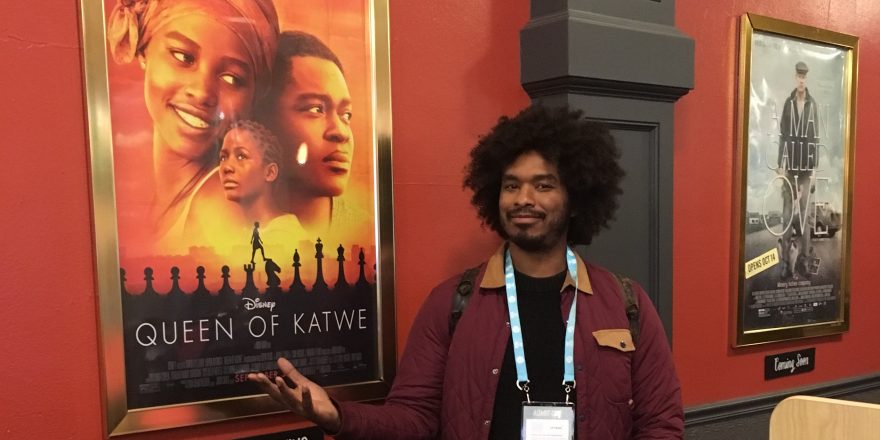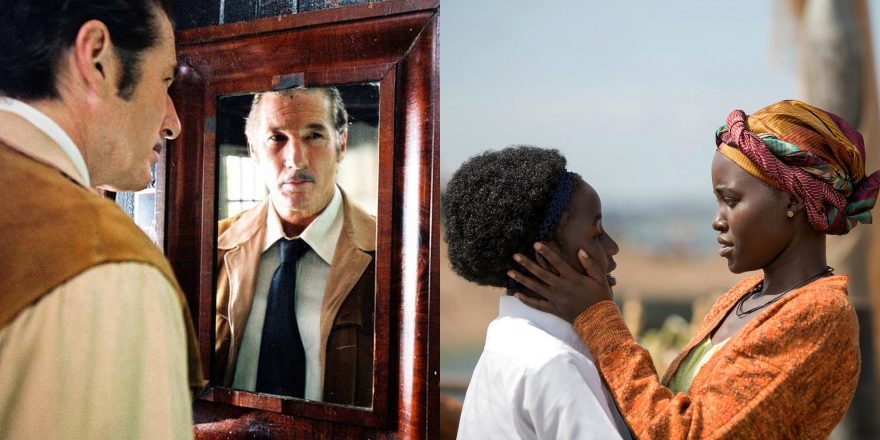Over the festive break, Talkhouse Film is revisiting some of its most read (or listened to) pieces of the year, including this one. Happy holidays! – N.D.
Let’s just get it out of the way up top. Go see Queen of Katwe. Go with the whole family. If you identify as Black, African-American, African, West Indian, human with Cherokee in your family, Creole, Quadroon, melanated, brown or any other bespoke cultural ethnic identity that you can connect to Africa in the past 800 years, and have children, make sure you take your kids to see it. When it comes out on Blu-ray, get the Blu-ray or the HD download, and keep it in your collection. Screen it casually, for your kids, especially. Support this movie and allow it to do its work of supporting you and your efforts to pattern self-discipline, self-love, resiliency, determination, grace, power, swag and rhythm, for your babies.
The movie is selling you this idea. It’s saying that you will be spiritually uplifted in exchange for your $15 and two hours of undivided attention. It’s rare that a huge corporation sells you a product by saying it will uplift you … in any way … and that sell be true to life. The closest precedent that comes to mind is Akeelah and the Bee. That movie that introduced us to the demigoddess known as Keke Palmer. That movie is moving, and really motivates you to double-check the spelling in your emails for weeks after watching it, but other than Keke, I don’t remember much about it.
Not that it’s a competition, but I’m certain Queen of Katwe will stick with me. Its revelations come fast and furious. Notably Lupita’s arched-back, hand-on-hip gait, the one I’ve seen on women of the diaspora the world over, atop which she she can balance a day’s worth of produce, the well-being of black people everywhere, and five gallons of water. There’s Mira Nair’s uncanny ability to find a kind of plainspoken prettiness in the tonal spectrum of poverty-stricken spaces; so much of the way she renders the characters and the space testifies to a mastery of their environment. She pushes this into and through the lurid poverty of Uganda’s slums into the neocolonial pathologies of a bistro-Africana bourgeois, in one scene giving us a schoolmaster who literally turns his nose up at children from Katwe, the film’s titular slum.
And then there is Madina Nalwanga, the young wunderkind actress who plays the film’s lead. As Phiona, Madina hits all the genius-runs-through-me beats, the deft turns of emotion, from despair, to arrogant, to giving, to determined, the unteachable charisma, the spark in the pupil; simply put, you believe her. But where she separates herself is in her preternatural ability to find the shadow self of this particular protagonist. We go into the movie knowing this woman, then a girl, was a brilliant chess player who was a doting sister to her two brothers and a dutiful child to her embattled mother – the trailer and the lore of the live-action Disney epic tell us as much before we set foot in the theater. But what we cannot know and cannot have suspected is the profound way that Phiona’s hubris manifests itself. In addition, we can’t know the shape of the desperation that wells up from time to time in the type of poverty in which your next meal isn’t guaranteed, and how that desperation can distort a child when she finds a way out of it.
Nair weaves this into the story and the performances expertly. Katwe’s strongest element is how it uses a story about an exceptional child with exceptional talents to dismantle the usefulness of the idea of exceptionality. The movie sort of calls out this “great man/woman of history” trope and shows us how corrosive it is to put on a pedestal those whose intelligences we have set above everyone else’s. This tokenism disfigures the token and breeds the aforementioned hubris, and as seen in Phiona’s main struggle, it is the first step on the road to the colonial pathologies that run rampant through the bourgeois class.
I’m distressed by how few people have gone to see Queen of Katwe. I’ve been telling people to check it out. Most people have told me they weren’t interested because they got after-school-special vibes from the trailer. No lie, I did too, but Mira, and Lupita, and the refreshing absence of a white savior helped me overlook what I agree was a terrible trailer that made the film seem like some weird, not-funny version of Cool Runnings with chess. After the movie was over, my partner and I looked at each other in semi-shock, verbalizing our surprise, “That shit was good! It wasn’t cheesy at all!”
I don’t want to blame anyone, but a lesson is here to be learned. The story you tell to the public when marketing your movie is a story that must be executed by artists, hopefully the artists that made the movie. I don’t know who told the story of this movie to the public but there was a lot of dissonance between the story they wanted to tell and the story Mira Nair actually told to the blessed souls who showed up to the movie.
There were 10 people in my screening at UA Court Street, where I had seen not three months earlier several hundred people fight over assigned seats to watch an overwrought, unoriginal, uninspired remake of The Jungle Book, a Disney movie that did not need to be remade. When The Jungle Book ended, people filed out … disaffected during the Captain Obvious pop-up book-themed closing credits, they had participated in the drill, obeyed. When Queen of Katwe ended, those 10 people stayed through the Afrobeats-themed closing credits, which picked up on the popularity of those videos of Ugandan children dancing to P-Square songs all over Facebook. After this celebration, they stood and applauded.
It’s not a competition, tho.






